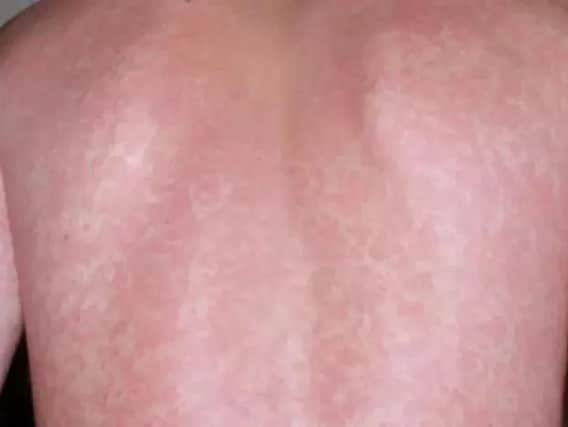What parents need to look for as cases of Scarlet Fever reaches 50-year high in England


The disease has been on the rise since 2014, but experts have so far failed to find a reason for the recent increase.
What is Scarlet Fever?
Scarlet fever is a bacterial illness that mainly affects children and is distinctive due to its pink-red rash.


Advertisement
Hide AdAdvertisement
Hide AdIt is highly contagious and should be treated with antibiotics.
Dr Theresa Lamagni, the body’s head of streptococcal infection surveillance, said: “Whilst scarlet fever is not usually a severe illness it should be treated with antibiotics to reduce the risk of further complications and to minimise the risk of spread to others.”
What are the symptoms?
Dr Lamagni added: “Individuals should be mindful of the symptoms of scarlet fever, which include a sore throat, headache and fever with a sandpapery, fine, pinkish/red rash developing within one to two days of first symptoms.


“If you or your child develops any of these symptoms you should contact your GP. Children or adults diagnosed with scarlet fever are advised to stay at home until at least 24 hours after the start of antibiotic treatment to avoid spreading the infection to others.”
Advertisement
Hide AdA Public Health England spokeswoman added: “It’s not uncommon to see more cases of scarlet fever during winter and spring.
Advertisement
Hide Ad“Although we have seen a small increase in cases this year, scarlet fever is usually a mild illness that can be treated with antibiotics to reduce the risk of further complications and to minimise the risk of its spread to others.
“Children or adults diagnosed with scarlet fever are advised to stay at home until at least 24 hours after the start of antibiotic treatment to avoid spreading the infection to others.”
Where can I find out more?
For more information, visit the NHS Choices website here.